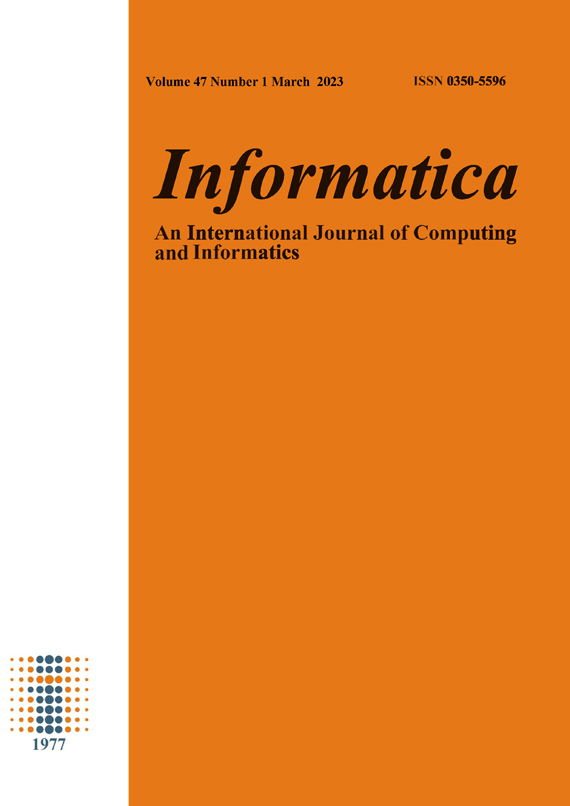Enhancement of NTSA Secure Communication with One-Time Pad (OTP) in IoT
DOI:
https://doi.org/10.31449/inf.v47i1.4463Abstract
Internet of Things (IoT) systems use interconnected devices with limited processing, memory, storage, and power availability. Designing the IoT system requires careful consideration of data security. IoT networks are used to collect, process, and transport data; as a result, it needs to be encrypted and secured. To ensure that the data of IoT systems are protected, a variety of lightweight encryption techniques have been developed. These algorithms are unable to carry out complicated or extensive computations. The current challenge facing lightweight cryptographic algorithms, such as NTSA, is how to combine the highest level of security with the least amount of negative influence on runtime speed and space. By applying the One-Time Pad (OTP) technique, the proposed mechanism can raise the security level and effectiveness of NTSA. The proposed mechanism must be put into practise and put to the test in order to demonstrate its effectiveness and capacity to satisfy the needs of the resource-constrained devices. Due to the benefits of the OTP, this suggested method would be beneficial for devices with minimal resources. The proposed technique offers a greater security level, 2134, than NTSA, 2128, after examining and evaluating the experimental data noticed throughout the tests. NTSA is slower than the suggested approach by 70\% in terms of runtime speed. While NTSA uses 16\% of SRAM, the proposed algorithm only uses 12\%. NTSA uses 70\% more energy than the suggested algorithm, with higher energy consumption results of 0.000388 Joules for the proposed algorithm and 0.001295 Joules for NTSA.References
S. S. Oyewobi, K. Djouani, and A. M. Kurien, “Visible light communications for internet of things: Prospects and approaches,
challenges, solutions and future directions,” Technologies, vol. 10, no. 1, p. 28, 2022.
I. H. Sarker, A. I. Khan, Y. B. Abushark, and F. Alsolami, “Internet of things (iot) security intelligence: a comprehensive overview,
machine learning solutions and research directions,” Mobile Networks and Applications, pp. 1–17, 2022.
A. E. Omolara, A. Alabdulatif, O. I. Abio dun, M. Alawida, A. Alabdulatif, H. Arshad et al., “The internet of things security: A sur-
vey encompassing unexplored areas and new insights,” Computers & Security, vol. 112, p. 102494, 2022.
I. Ashraf, Y. Park, S. Hur, S. W. Kim, R. Alroobaea, Y. B. Zikria, and S. Nosheen, “A survey on cyber security threats in iot-enabled maritime industry,” IEEE Transactions on Intelligent Transportation Systems,2022.
Downloads
Published
Issue
Section
License
I assign to Informatica, An International Journal of Computing and Informatics ("Journal") the copyright in the manuscript identified above and any additional material (figures, tables, illustrations, software or other information intended for publication) submitted as part of or as a supplement to the manuscript ("Paper") in all forms and media throughout the world, in all languages, for the full term of copyright, effective when and if the article is accepted for publication. This transfer includes the right to reproduce and/or to distribute the Paper to other journals or digital libraries in electronic and online forms and systems.
I understand that I retain the rights to use the pre-prints, off-prints, accepted manuscript and published journal Paper for personal use, scholarly purposes and internal institutional use.
In certain cases, I can ask for retaining the publishing rights of the Paper. The Journal can permit or deny the request for publishing rights, to which I fully agree.
I declare that the submitted Paper is original, has been written by the stated authors and has not been published elsewhere nor is currently being considered for publication by any other journal and will not be submitted for such review while under review by this Journal. The Paper contains no material that violates proprietary rights of any other person or entity. I have obtained written permission from copyright owners for any excerpts from copyrighted works that are included and have credited the sources in my article. I have informed the co-author(s) of the terms of this publishing agreement.
Copyright © Slovenian Society Informatika








